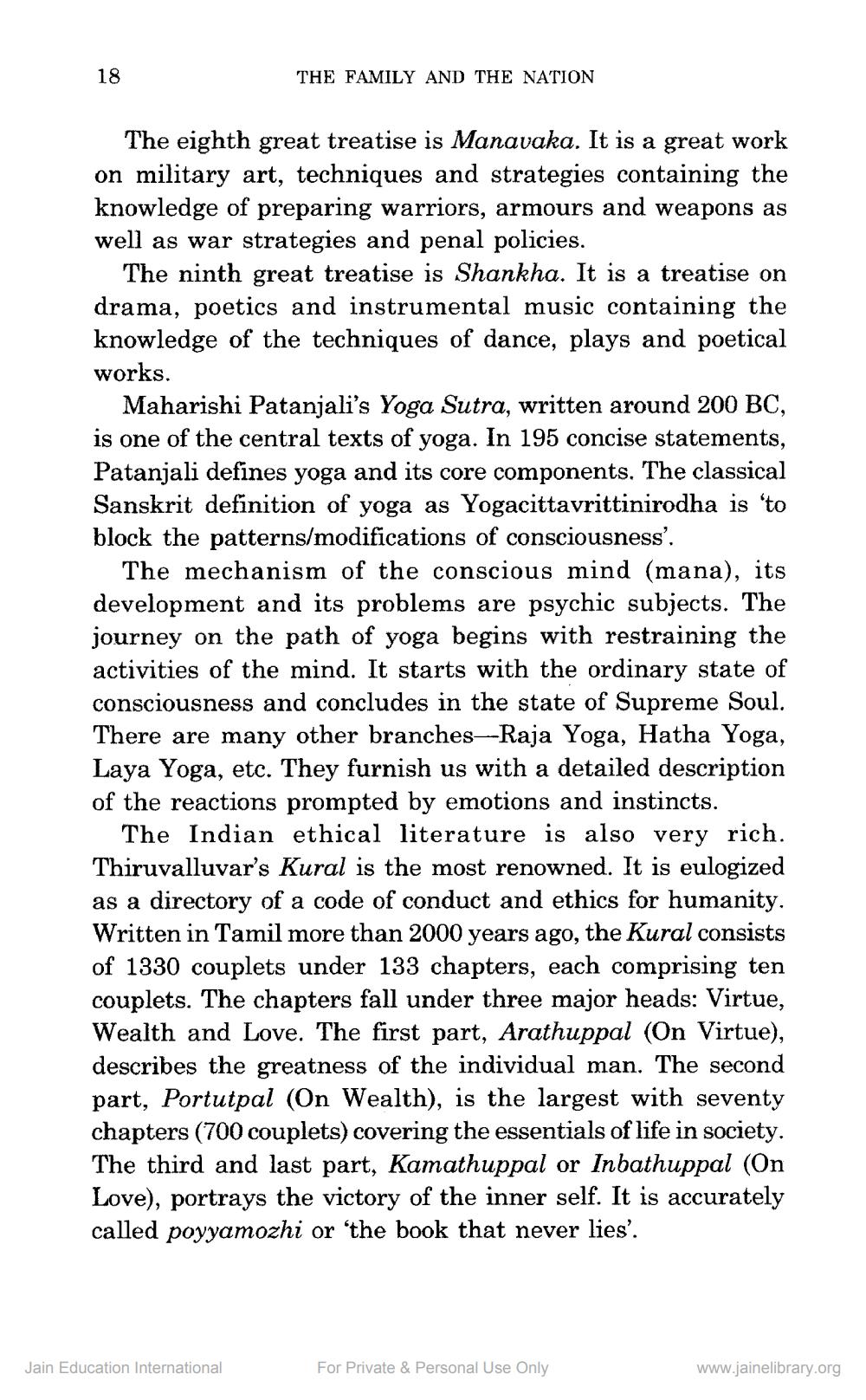________________
18
THE FAMILY AND THE NATION
The eighth great treatise is Manavaka. It is a great work on military art, techniques and strategies containing the knowledge of preparing warriors, armours and weapons as well as war strategies and penal policies.
The ninth great treatise is Shankha. It is a treatise on drama, poetics and instrumental music containing the knowledge of the techniques of dance, plays and poetical works.
Maharishi Patanjali's Yoga Sutra, written around 200 BC, is one of the central texts of yoga. In 195 concise statements, Patanjali defines yoga and its core components. The classical Sanskrit definition of yoga as Yogacittavrittinirodha is 'to block the patterns/modifications of consciousness'.
The mechanism of the conscious mind (mana), its development and its problems are psychic subjects. The journey on the path of yoga begins with restraining the activities of the mind. It starts with the ordinary state of consciousness and concludes in the state of Supreme Soul. There are many other branches-Raja Yoga, Hatha Yoga, Laya Yoga, etc. They furnish us with a detailed description of the reactions prompted by emotions and instincts.
The Indian ethical literature is also very rich. Thiruvalluvar's Kural is the most renowned. It is eulogized as a directory of a code of conduct and ethics for humanity. Written in Tamil more than 2000 years ago, the Kural consists of 1330 couplets under 133 chapters, each comprising ten couplets. The chapters fall under three major heads: Virtue, Wealth and Love. The first part, Arathuppal (On Virtue), describes the greatness of the individual man. The second part, Portutpal (On Wealth), is the largest with seventy chapters (700 couplets) covering the essentials of life in society. The third and last part, Kamathuppal or Inbathuppal (On Love), portrays the victory of the inner self. It is accurately called poyyamozhi or 'the book that never lies'.
Jain Education International
For Private & Personal Use Only
www.jainelibrary.org




